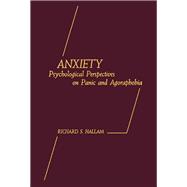
Note: Supplemental materials are not guaranteed with Rental or Used book purchases.
Purchase Benefits
What is included with this book?
| General Introduction. Psychiatric Research and Panic-Anxiety: Introduction to | |
| Psychiatric Research and Panic-Anxiety | |
| Personal Accounts of Panic | |
| Panic-Anxiety and Somatic Complaints | |
| Panic-Anxiety and Alcohol Dependence | |
| Depersonalisation | |
| Psychological Theory and Panic-Anxiety: Introduction to | |
| Rational Approaches: Appraisal, Verbal Mediation, Labelling and Attribution | |
| Learning Models and Central Mechanisms | |
| Holistic Approaches | |
| Theories of Panic-Anxiety and Agoraphobia | |
| Theoretical Implications of Exposure-Based Therapies | |
| Anxiety: Theoretical or Lay Construct? A Schematic Model of Panic-Anxiety | |
| References | |
| Index | |
| Table of Contents provided by Publisher. All Rights Reserved. |
The New copy of this book will include any supplemental materials advertised. Please check the title of the book to determine if it should include any access cards, study guides, lab manuals, CDs, etc.
The Used, Rental and eBook copies of this book are not guaranteed to include any supplemental materials. Typically, only the book itself is included. This is true even if the title states it includes any access cards, study guides, lab manuals, CDs, etc.